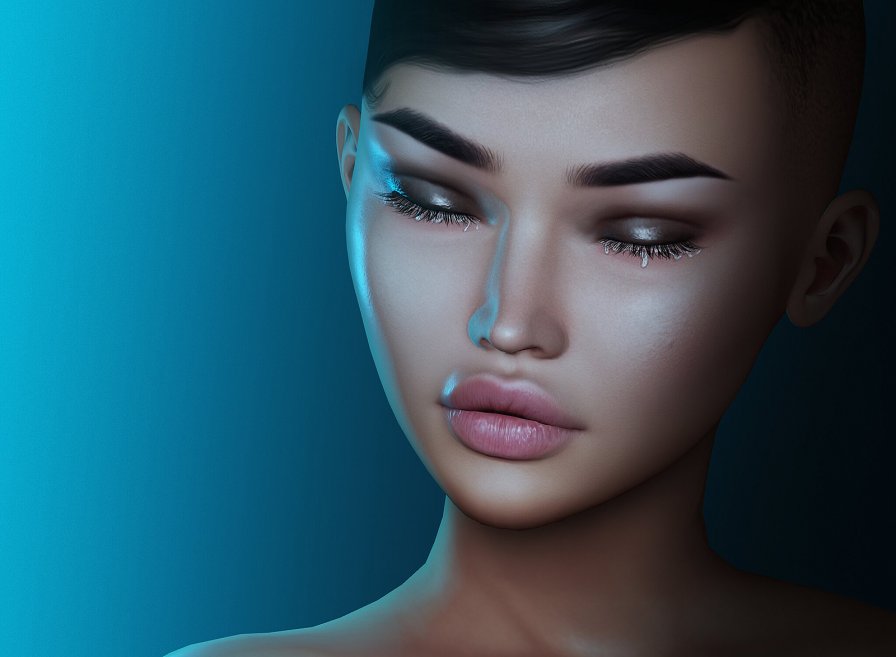We are celebrating the end of the decade through lists, essays, and mixes. Join us as we explore the music that helped define the decade for us. More from this series
40
DJ Rashad
Double Cup
[Teklife; 2013]
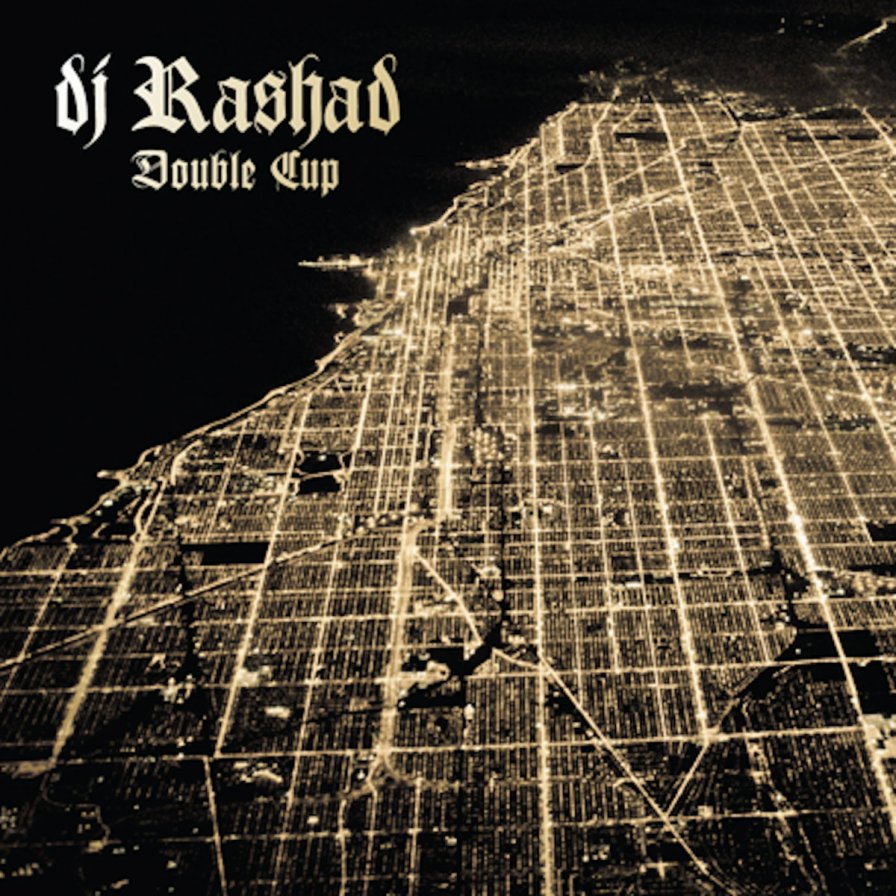
Five years since his death, DJ Rashad’s vision maintains a spiritual grip on the music world. His art and life were marked by an eternal exuberance, with his legacy defined on Double Cup, a coiled spring of hedonistic and architecturally pristine syncopation. DJ Spinn sumarized the Double Cup state of mind on its title track: “Break it down, roll it up, pass that shit, what the fuck spinning Rashad? That double cup/ Teklife we run this shit, pour up a double cup.” Rashad’s innovation was adding a luxurious sheen to his production. Whereas early footwork was militaristic, filleting samples beyond recognition and sauteeing them in a muddy slurry of sub bass, the international-facing Double Cup was undeniably VIP music. Songs like “Drank, Kush, Barz” and “She a Go” could be jammed in a limo or hotel lounge, whereas “Acid Bit” and “I’m Too Hi” drew parallels between house, rave, and the DIY spots where Rashad and Spinn used to mix for footwork crews all night. In just under 10 years since Planet Mu brought the thriving Chicago footwork scene to an international audience, the power and influence of Double Cup has only grown.
39
Death Grips
The Money Store
[Epic; 2012]

Death Grips’ affiliation with Epic Records was as quick as it was conspicuous, but in retrospect, doesn’t the major label deserve some credit for helping to develop the DG sound? “Naw, fuck that,” MC Ride indirectly responded on the eponymous track. It’s clear looking at the backstory and the releases that happened afterward just how unshakably careening the trio of Ride, Zach Hill, and Andy Morin were from their inception. The Money Store happened despite the institutional support implied by labels clamoring for a signature, and the relatively sample-free (compared to the preceding Exmilitary) brutality therein felt like a natural continuance and an initial show of artistic solipsism. Death Grips highlighted the importance of their “vision” around the time of the album’s release. The album itself left us with a sense that cohesiveness was totally compatible with ambiguously violent lyrics that were certainly more heaved than they were sung or rapped. And, ultimately, the insanely catchy hooks that announced “SYSTEM OVAH” or “double… d-double” had no suited producer to thank. Music world, meet the unstoppable force with no immovable object.
38
Tirzah
Devotion
[Domino; 2018]

Devotion is a gift. The London-based designer and musician Tirzah Mastin took over six years between releasing her debut pair of experimental, bassy EPs on Greco Roman (No Romance, I’m Not Dancing) and her debut album, Devotion. The radical departure from club sounds to bedroom R&B was executed with unbridled vulnerability. The tracks on the two EPs were eclectic, fun, bubbly. Tirzah’s voice lilted like a supermarket announcer, the beats seemingly constructed from shopping mall refuse and household implements. However, slow numbers like “Malfunction” indicated where she would go next: conversational, candid, poetic yet maintaining a claustrophobic intimacy, as if we were witnessing a couple have a domestic on the tube. Few were prepared for the humility that Tirzah demonstrated with Devotion, an album that maintains a strong acuity and deft touch. Despite the sparse production and essentially naked tone of Tirzah’s voice, the album didn’t feel at all unfinished or underdeveloped. She crooned and stumbled on “Do You Know;” was disarmed and uncomfortably candid on “Affection.” The effect was like a twilight confrontation, a lover inches from your face, hot breath against your cheek, daring you to look them in the eyes.
37
SOPHIE
PRODUCT
[Numbers; 2015]

On Black Friday 2015, SOPHIE’s debut compilation of previously-released and then-new singles, PRODUCT, arrived alongside a flurry of limited-edition conceptual art-cum-cult objects that included a silicone sex toy, a transparent plastic puffer jacket, some branded future-goth sunglasses, and a pair of towering platform party heels. Each, unsurprisingly (and supposedly), sold out in a blink, snatched out of the market by the most on-it fans and collectors, but luckily enough for the rest of us, the songs kept circulating. Of the eight singles, highlights include opener “BIPP” (originally released by Numbers in 2013), which behaved a bit like a sonic cv with imperative lyrics like “I can make you feel better, if you let me.” It was soon followed by the addictively effervescent “LEMONADE” (2014), which infamously achieved the commercial crossover appeal SOPHIE and her PC Music affiliates had been sounding out all along when it was used in a summer 2015 McDonald’s commercial. And lest we forget crowning jewel “HARD” (2014), which to my mind is still one of her strongest tracks. Earlier this year, Numbers reissued PRODUCT in its original format of four vinyl singles as a testament to the way that the songs have stood the test of the latter half of the decade amidst an ever-escalating and well-earned SOPHIE frenzy.
36
Jlin
Dark Energy
[Planet Mu; 2015]

This decade upped the clutch minimalism ante considerably. There was Ninos Du Brasil’s Novos Mistérios, Shygirl’s self-titled EP, and Container’s 2015 release, but the latter’s release year and this nearly-done decade belonged to Jlin’s jarring, neck-breaker of a debut. Four years after turning our heads with her track for Planet Mu’s Bangs & Works Vol. 2, Jlin gave us this compact but ferocious opening statement. We got our “Erotic Heat” fix (juiced and reduced here), but not before a punishing sequence cresting with the dizzyingly efficient speed-garroting comprising “Guantanamo.” As much as this album throttled one’s skull, it also caressed the ear with nimble, finely embossed patterns that would make muscles contract, shy of dancing. And her spare (for footwork-based music) use of sampling felt both classic and refreshing in its nakedness. That Black Origami raised the bar Jerrilynn Patton had set here was arguable, but Dark Energy’s tightly-coiled, tension-fueled charm still felt rough and ready-built to last, much like the still-cracking melodrama sampled on its closer.
35
Beyoncé
Beyoncé
[Parkwood/Columbia; 2013]

Beyoncé is a corporation at this point. Online, Beyoncé is legally www.beyonce.com. Any associated websites, features, content, materials, products, and/or services is owned and/or operated by Parkwood Entertainment, LLC, where Beyoncé Knowles-Carter holds the title CEO. Beyoncé is the climax of Queen Bey’s superpower: algorithmic perpetuation of business.
In 2016, Beyoncé brought on (obvious Illuminati profiteer) Steve Pamon, who was JPMorgan Chase’s head of sports and entertainment marketing. Hiring Pamon was after 4, around the time she announced “I started my own company when I decided to manage myself.” And with almost no promotion and zero announcement, Beyoncé gloriously reimagined Queen Bey, as if announcing herself for the first time, similar to how aspiring pop stars typically named their debut as self-titled (e.g., Mariah Carey, Whitney Houston). Ultimately, sealing the deal (in BLOOD) with Pamon, Beyoncé miraculously materialized her sentiment, “I wanted to follow the footsteps of Madonna and be a powerhouse and have my own empire” — i.e., the algorithmic perpetuation of business.
Larger than any sports star, streaming channel, actor, museum, musician, subscription service, performer, and live event: Beyoncé is an icon. She’s who all of our kids need to discover and become. You too can absolutely be Queen Bey. Feel herself move through your body throughout the entire listening experience of Beyoncé. Once again, the tips of your fingers and follicles of all hair flutter in femininity, flush with Beyoncé. You’ve become her so many times throughout your life that you’re still becoming her. The royal we can be come Beyoncé.
Afterthought: FUCK JAY Z!!!
34
Sufjan Stevens
Carrie & Lowell
[Asthmatic Kitty; 2015]
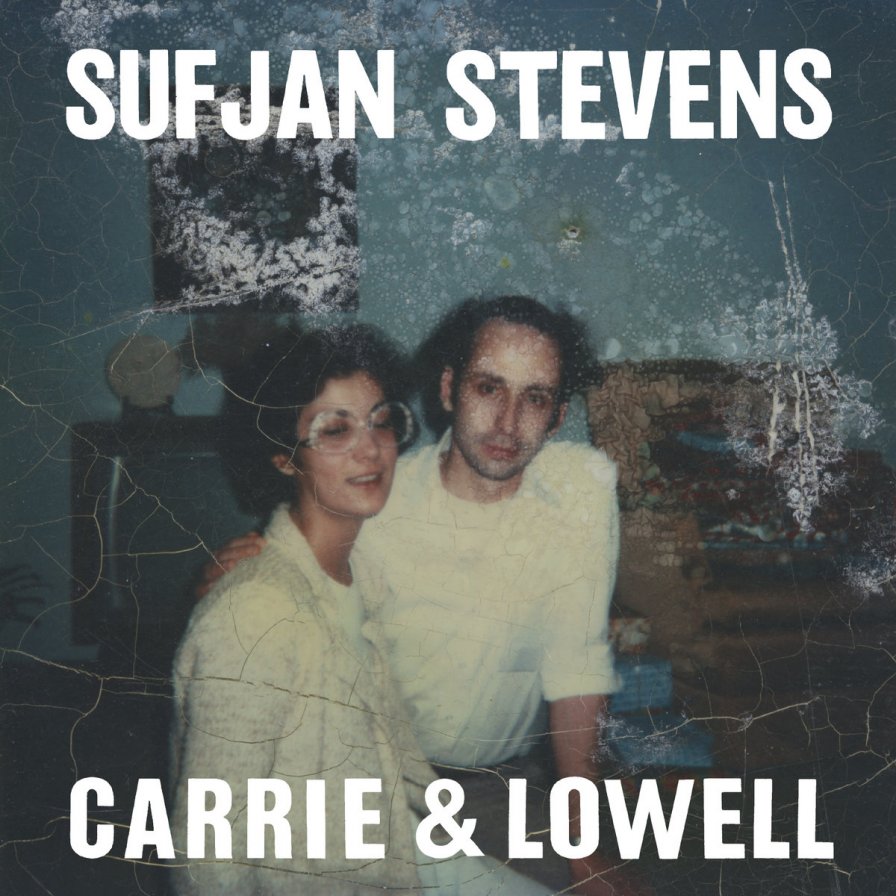
Like Sufjan, I don’t know how to begin. I don’t really listen to Carrie & Lowell all that much — it cuts too deep. In the hyperspecificity of its pain — being left at video stores, swimming lessons, hidden cigarettes — Carrie & Lowell got at some more general loss, one that found its form in the frost-bitten hollowness of its ambiences and in the rosy-warmth of its guitar-work. It was an emptiness communicated in the precarity of its melodies, just as likely to reach for the heavens as to fall the fuck apart. How to begin? Or perhaps, how to end? Because really, what was there to be done with an album whose central figure was the spirit (both divine and crushingly banal)? Whose every utterance felt haunted? This was not a hopeful record. Its questions left echoes, but no answers. How, Sufjan asked, could you mourn the losses that made you, whose only presence was their absence? What were you left with, when people depart, apart from yourself? But — and this was crucial — the spectrality of these questions was also the site of the album’s alchemy, because if Sufjan was left with ghosts, we were left with music and lyrics, with the sounds of someone trying to live with their ghosts, to ride with them. And blessedly, sometimes that was enough. Sometimes it was enough to know that Carrie & Lowell, in its despair, in its signs and wonders, in its exquisite embrace of those who leave and those who stay, was there. Whether we could hear it or not.
33
James Blake
James Blake
[ATLAS; 2011]
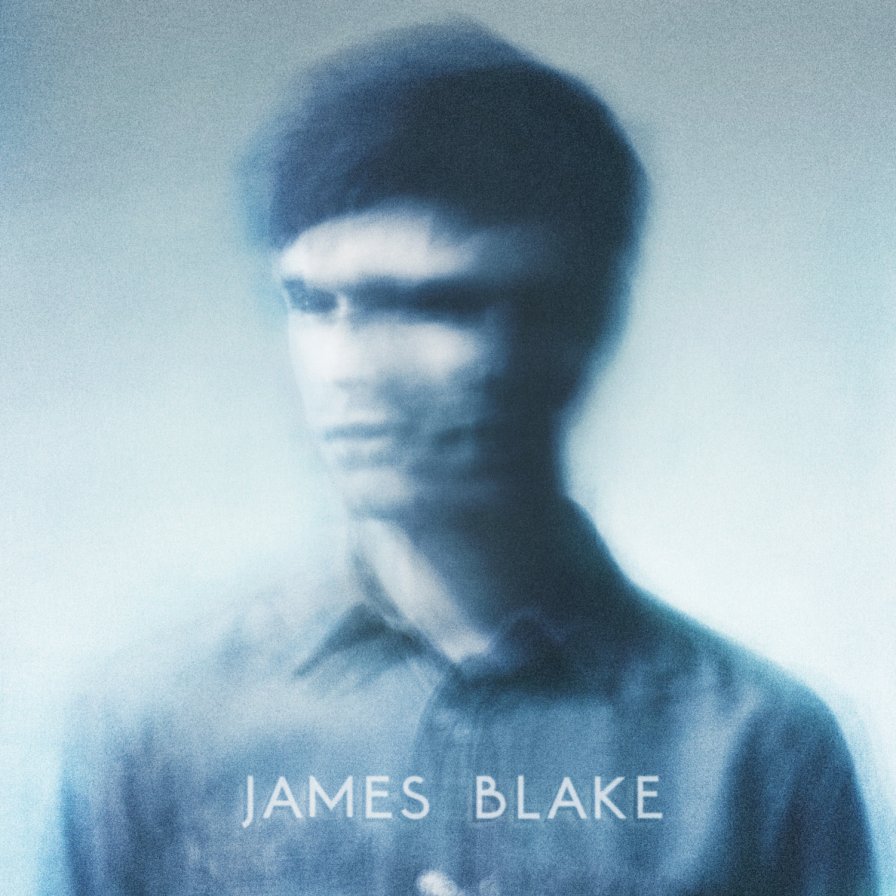
In 2011, James Blake broke from a devotion to the beat by positing new spaces between the biological and the technological, seeing the digital in all its expressive potential. From the hum of a CPU, Blake sourced tenderness. He derived a vulnerable, capable instrument for communicating depression and trauma from the textured cracking of a quantized, pitch-corrected voice, always barely breaking surface. He brought sweetness with rhythms that escaped the average body, and he brought the warmth of an embrace with harmony, melody, and lyric. James Blake sparked a decade of output doused in melancholy and spoken in a new syntax, where experiments in song and sound could take place, where the tinkerer could produce. This was music that established its own listening context and did so with total clarity of vision and voice. Production experiments became tangible because of the cathartic and affective responses they exposed: the jolting polyrhythms of “Unluck,” the displaced and booming bass in the midst of “Limit to Your Love,” the unsteady pulse of “Lindsfarne II,” the fissuring sidechained synth at the peak of “The Wilhelm Scream,” and the repose found within “Give Me My Mouth,” all of these emotionally mapped, inscribed through sound. His music of the past decade presented us with new soundscapes for brokenness, a troubled machine with a sleek veneer, a soundtrack to the iridescent violet malaise that characterizes plugged-in life even a decade later.
32
Danny Brown
XXX
[Fools’ Gold; 2011]

In a review of Old, Danny Brown’s 2013 follow-up to 2011 breakthrough XXX, we called the earlier release “a record that alternated between manic, mind-numbingly hyped-up, incredibly graphic tales of sexual debauchery and drug use, and reflections on the effects of crime, poverty, and drug abuse on the individual, the family, and society at large.” If that juxtaposition shocked some during the first half of the decade, it might be regarded as old hat today, thanks surely in part to the enduring influence of XXX and Brown himself. In hindsight, we might see XXX as Danny Brown’s Rubber Soul: the dividing line between the Midwest-rooted alternative hip-hop stylings of an equally seminal record like The Hybrid and the stylistically unbound indulgence of a more critically acclaimed record like Atrocity Exhibition. XXX was where the influence of peers like Quelle Chris met the influence of outsiders like Paul White, the contrast informing an entire generation of genre crossover since. On that note, XXX also likely holds a special place in the hearts of many who turned 30 this decade, as the album’s intro and outro both provided anthems to celebrate the occasion. And while not every track has aged as well, the overall impact remains ever present.
31
Rihanna
ANTI
[Roc Nation; 2016]

The wordplay is just too enticing: ANTI-capitalist, ANTI-authority, ANTI-thetical. Somehow, Rihanna’s eighth record played us all when it came to each of those things. It was a pop album that poptimist critics couldn’t rationalize. Despite their titular accomplishment, they still seemed out of touch with the realities of streaming-era pop. ANTI was both savvy business move and complete commercial dodge, a too-long and not-long-enough author statement that tasted like the last drag of your last-ever cigarette while sounding like the lighter click before the first time you ever started. Before the everywhere cultural moment of the Black cowboy, Rihanna was a lone desperado, a Marlboro Man staring down the empty plain toward a town of undeserving sinners, uttering a single command: “Work.” Emerging from a world of information overflow and the Babel of internet-pop-politics, ANTI was solitary, inarguable, and unfuckwithable. In other words, yes, ANTI was thetical. You can go right on ahead and reach for that pistol if you want. By the time you’ve grabbed it, you’ll already have a hole where your heart should be.
30
Destroyer
Kaputt
[Merge; 2011]

Dan Bejar broke his longest drought between records and kicked off the decade with Kaputt, managing to prove that he was still capable of surprising us. Although initially confounding, the album eventually made perfect sense as unmistakably “Destroyer,” not unlike 2004’s Your Blues. Setting the tone for the rest of his 2010s output, Kaputt took the elements of a Destroyer record and shot them through a prism of neon, velour, and barbiturates. Since its release, Bejar’s voice has rarely exceeded a mumble; the previously garish colors have been stripped from his album covers; and his particular brand of rock arrangements began to lean less on guitars and more on woodwinds. Perhaps no album in his career has so thoroughly set a tone for so much of what was to come. Though his music largely exists out of any specific time or place, Kaputt, oozing as it is with a kind of hazy languor beneath a glossy sheen, does seem to make sense as an intro to this decade, a disorienting mix of maximal stimulation and minimal engagement — “ambient disco,” as Bejar put it, or: it’s got a good beat, and you can lie on a couch to it.
29
Elysia Crampton
Elysia Crampton
[Break World; 2018]
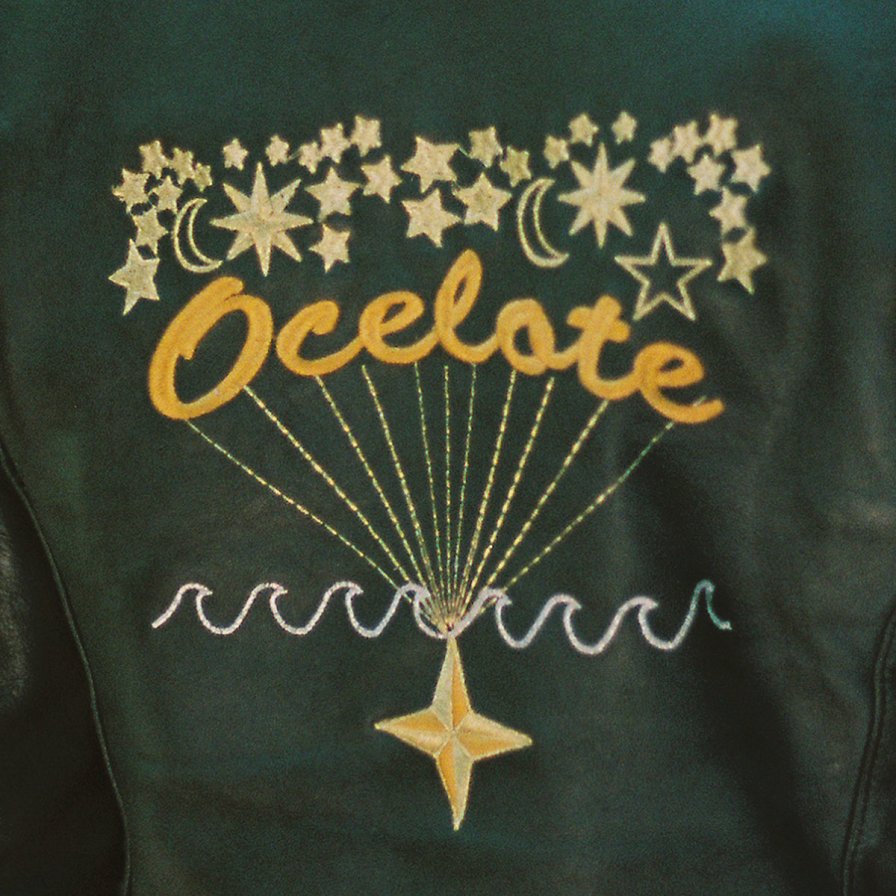
Over the course of the decade, the sound and influence of Latin American music grew to dominate the charts, even going so far as to influence how chart position is calculated to take into account YouTube, where the youth, and artists like Bad Bunny, dominate. Through this narrative of style and influence is a conversation about ownership — the term “latin” seems insufficient, given the diversity and breadth of talent competing for self-definition. Elysia Crampton’s music is insistent in its reference to the Aymaran people of Bolivia and to Crampton’s trans identity. The track “Moscow,” on her self-titled debut, produced after releasing celebrated albums and digital artifacts as E+E, was dedicated to the trans femme mariposa Ofelia, f.k.a. Carlos Espinoza. In addition to the contemporary message, the insistent throb of the songs on EP seemed unconcerned with geometry or the contemporary minimalist ecosystem of flat planes and muted tones. “Orion Song” began with what sounded like a furious alarm clock, and the gradual assemblage of objects and propulsive noise makers gave the song a maximal, euphoric sense of terror. The anarchic clarity of these tones felt both of-the-moment and ahead of it. Terror and euphoria were defining aesthetic modes of the 2010s, observable in the lush panic of popular film studio A24 and the obsessively granular doomer mentality of experimental music. Elysia Crampton’s music in turn weaved a compelling narrative of this decade, one of bodies and identity, revolution and reflection. She thrusted a lance through this war rug of digital noise to reveal sunlight.
28
Kendrick Lamar
To Pimp a Butterfly
[Top Dawg; 2015]

The gall Kendrick Lamar had to doctor a Tupac soundbite by inserting himself in it, to place himself in conversation with the West Coast hip-hop avatar and discuss the importance of autonomy and perseverance as two men embroiled in a system rigged against them. Lamar chose to end To Pimp a Butterfly with this interaction as a meditation on longevity and the dangers of artistic corruption. The entire “interview” would come off as a gauche stunt if Butterfly hadn’t spent its previous 15 tracks solidifying Lamar’s status as the preeminent mouthpiece of hip-hop today.
Twenty-seven years old when the album was released, Lamar’s greatest fear at the time seemed to be his 30s. This is the decade of resignation, of financial and creative ruin, according to Butterfly. So here we have K-Dot’s masterpiece, a record so clearly created with the intention of establishing the Compton rapper’s genius before he hit that age of no return. Its politics were prominent and thoughtful, yet never overbearing or preachy. Its grooves were impeccable, beaming soul, jazz, and funk through a prism of nostalgia that Lamar was too young to have ever experienced firsthand. The second half of the 2010s saw hip-hop becoming less verbal, stylized as ever but more iterative. In light of To Pimp’s bravura, its self-aware lunge toward greatness, it’s easy to see why the genre retreated backwards in reaction.
27
Kanye West
My Beautiful Dark Twisted Fantasy
[Def Jam; 2010]

Embracing your inner asshole shouldn’t lend itself so well to pathos. But on My Beautiful Dark Twisted Fantasy, Kanye’s first opus of the 2010s, all the falsely penitent confessions about dick pics, all the fantasies of porn star matrimony, all the embittered infidelity made Yeezy seem human again. The coldness of Kanye’s synthpop dirge 808s & Heartbreak dissipated upon Ye’s inaugural line in “Dark Fantasy”: “I fantasized ‘bout this back in Chicago.” West was back, emboldened as ever and characteristically prodigal.
Fantasy should have bloated over with star power, as it commissioned both heavyweights and up-and-comers alike from the hip-hop, indie, and R&B universes. It should have choked on its own ambition, vacillating between self-important baroque orchestration and irreverent auto-tune austerity. And yet it succeeds, a monument of gluttony and poise. As Barack Obama attested, Kanye’s a jackass, which we all knew to be true already. Why not let the jackasses have their moment of glory, though? If anyone’s earned it, it’s Kanye.
26
Dean Blunt
The Redeemer
[Hippos in Tanks; 2013]

The teachings of the Catholic church oppose a set of cardinal sins and virtues. Lust and Chastity, Wrath and Patience, Envy and Gratitude. These tuples represent archetypal conducts and dispositions, behaviors to avoid and pursue. Atonement is the bridge between redemption and sin. One can identify many such sins in Dean Blunt’s The Narcissist II: “XXX,” “And I’ll show u heaven if u let me,” “I just need a bitch to lay…” Were there traces of reparation and penance in The Redeemer? Were those two albums a diptych more than entries in a tetralogy? Did a transparent attempt at psychomachia get mistaken for the heartbroken balladry of a rascal whose latest punt was to wear his heart on his sleeve?
Starting with the praying hands that adorned the cover, the signs were all there. “The Walls of Jericho,” “Seven Seals of Affirmation,” the Meridian Demon, “God forsake us now”… The clarity in the forms, a rupture with the lo-fi fuzziness of Hype Williams, also signified the opposition. Yet, not even the centrality of the longing for a lost love was new. Behold Dante traversing the circles of Hell to meet with Beatrice. Songs like “Need to let u go” or “Papi” seemed to frame a lover who understood he fucked up, as he praised what was inevitably lost. So much is clear. Tellingly, acoustic guitars and warm synths wrap the appearance of the female voice in the album. Blunt invited two female collaborators: one from the past to sing about the need to wake up and let go, as if calling from the netherworld; the other, present in Blunt’s successive work, who appeared rooted in immediacy, to talk about minutes and a very material home. Indeed, from the get-go, The Redeemer was billed as a “relationship study.” Was that the perverse rug-pulling? An allegory so blunt and evident by design? Maybe. Such is the paradox of an album that invites tropological interpretation while grinning from behind a fogged crystal.
25
Laurel Halo
Quarantine
[Hyperdub; 2012]

It’s difficult to choose which Laurel Halo release from the decade is her strongest work, from 2013’s deconstructed house EP Behind The Green Door to 2018’s dancefloor-ready DJ-Kicks installment to 2015’s ambient masterpiece In Situ. But it was 2012’s Quarantine, her debut album on Hyperdub, that was etched into music history for its provocative reinterpretation of what it meant to make a vocal album and, dare we say it, pop (gasp!) album this decade. Laurel Halo used her simultaneously processed and raw vocals to create a new kind of intimacy for the listener, sung as if you were the only receiver of these messages. The melodies were both infectious like a pop song and entirely unexpected, as though Halo were simply meandering through various thoughts, feeling her way through the music. Combined with ambience, obsessive repetitions, synths diffused through cheesecloths, 70s sci-fi atmospheres, and even more layers of voice, Halo created a subterranean cave filled with nothing short of an infinite sonic universe. We come back to its title, Quarantine, and it makes total sense.
24
Lolina
The Smoke
[Self-Released; 2018]

When I reviewed The Smoke, I tried to understand it in geographic terms. I heard in it the way that Inga Copeland’s Lolina gets in and around the city, tossing evidence into the river as she escapes from one place to another, running and exercising her “right to be forgotten.” My critical conceit was in assuming that, for all of her attempts to get lost, Lolina is a character who can be found. I understand now that the reason Lolina tosses her Oyster card into the Thames is because her escape is not a spatial one, but a spectral one. Lolina is a projection of Copeland; a “fake;” a ghost; an empty, vaporous presence. In retrospect, I should never have reviewed The Smoke. It is, as Lolina points out, an error typical of the critic, in their hubris, to “try to judge a girl by how she fakes.”
23
Future
DS2
[Epic; 2015]

Who else could sound as at home crooning alongside Taylor Swift and Ed Sheeran as they do weaving ballistic balladry on “Stick Talk”? Who else could conflate their lavish spending habits with ruminations on their deceased grandfather in such earnest?
Future Hendrix’s near-ubiquity in the 2010s is a testament to his effortlessly consistent output and his insular yet expansive universe. Establishing a hazy and highly melodic framework for nearly every trap-rapper to postdate his rise, he’s made a career out of straddling each end of his own dichotomy. Future is a crooner and a lyricist; an impassioned lover and a world-weary fighter; pop star and a monster — an artist whose confessional, often contradictory songcraft unfurls like a frantically-composed tweet thread.
Although any of Future’s mixtapes could have earned a spot on this list, DS2 stood out as our most lucid look into Future’s world to date. Produced almost exclusively by Metro Boomin and Southside, the tape was built on a brutalist foundation of bass, its thundering 808s and sirens boring deep into horror flick-inspired soundscapes. It was between elegant pads and industrial percussion that Future truly shined, his bars an uninterrupted torrent of moans, snarls, and introspective whispers.
In a decade defined by social media charades and songs designed to be TikTok dances or punchlines, DS2 best demonstrated Future’s painstaking attention to the details of his albums. A lesser artist could’ve built an image on his quotable (and strangely lovable) toxicity and strained “slob on me knobs.” In the case of Future’s oeuvre, though, the internet’s a mere distraction — nothing more than a vehicle for new tapes to drop. Bump “Where Ya At,” “Slave Master,” or “Kno the Meaning” and you’ll bear witness to the real spectacle: a filterless artist bent on exorcising all his demons in excruciating detail. Like its alchemical cover art, DS2 was amorphous, but always alluring — a lava lamp filled with cathartic spillage.
22
Mount Eerie
A Crow Looked At Me
[P.W. Elverum & Sun; 2017]

Death
When my father died, my mother was essentially destroyed by it, in many ways consumed by it. There wasn’t a day for months she wasn’t crying. Even when the tears dried, there was something shattered about her. It’s been almost 15 years since, and the fighter I knew growing up is gone, my father’s death replacing her with someone overwhelmed, remorseful, and anguished. I barely recognize her now. She maintains airs of independence, but deep down something was irreplaceably lost that September morning.
Is
What am I to know about death? My father passed away when we were only beginning to mend fences. Family members who have died seemed all too distant. My friends and family, what few I have, they’re still alive, only one facing the specter of death (though I’m not sure it’s real). All I know is that, like love, people change with death. Maybe I too have changed. But I don’t know. I can’t know. Nobody is willing to say so. In place of answers… a sad disquiet.
Real
I’m sorry for what you’re dealing with. I know, I know, it’s not final. But…it’s inevitable, isn’t it? Fuck, I can’t imagine even the slightest what pain and anguish you’re facing now. Knowing that chasm awaits you. But then, I’m not sure I’ll ever know. All I can say is I’m sorry, even if it’s so damn meaningless. Because I feel your hurt, even if I cannot so much as utter a coherent word of it. And I will feel it when that day comes. I can’t help it, you know.
21
Lil B
White Flame
[Self-Released; 2012]

A hundred feet of conduit banded up with deeply colored red tape, tossed in the back of a short-bed truck to be delivered at 8 AM. Gotta get electricity. I mean, Lil B helped create ALL of this. Shit: bruh. He’s reeeeal itchy. Ad libs got tossed off like grass clippings. Always promoting new projects, all of it rare too LOL. So much was covered on White Flame! It’s such a trip! Complicated, beautiful, contradictory, dull, transcendental, hilarious, DOPE, forgettable, soulful, sad, etc. Also, quick shoutout to all of the crazy shit he says, just in general. Oh, and another quick shoutout to the multiple musical styles/genres White Flame covered. He was all over the place on this one. The beats were so far off in the background that it at times felt like BASEDGOD was rapping over-top of his phone. I love him. #TYBG
We are celebrating the end of the decade through lists, essays, and mixes. Join us as we explore the music that helped define the decade for us. More from this series
